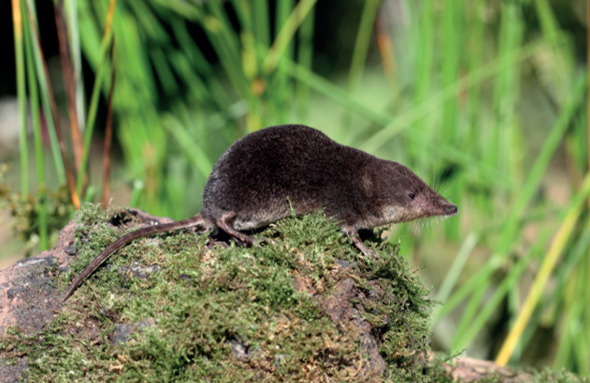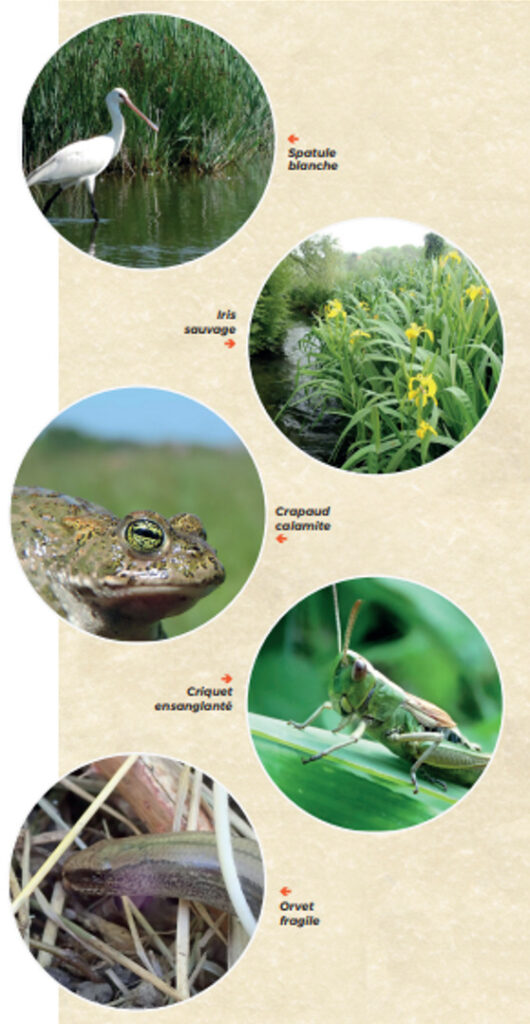
Between February 2021 and February 2022, everything that lives in the lower Saâne Valley, including birds, algae, rodents and insects, was methodically identified by a (small) team of ecologists…
Are you familiar with the water shrew?
No? That is quite normal: even though it is the largest shrew in Europe, it is rather solitary and discreet. It digs a burrow in the riverbank, then fills its nest with a ball of roots, moss and grass. This is where it tries to hide itself, particularly from its predators. Even the naturalist experts who carried out an inventory of the fauna and flora in the Saâne Valley did not come across a water shrew. However, they were helped in this by allies who are more talented than they are… the barn owls that shelter in the valley’s spires. By analysing the pellets that these birds form, that is, the indigestible parts of their prey that they regurgitate (e.g. hairs and small bones), experts can detect the presence of these stealthy animals, which the barn owls love to eat.
The verdict? No trace of any water shrews. A common vole at every meal, a harvest mouse and some white-toothed shrews, but no sign of a water shrew at all. Yet they are known to be present in the region. So, why not here? Experts have cautiously surmised that “the lack of water shrew bone remains does not mean that they cannot be found in the study area”. It is well known that the absence of proof is not proof of absence.
In fact naturalists spent a year recording evidence of the local wildlife. Several techniques were used for animals living in the water, e.g. capture, using nets or pots, as well as environmental DNA. Technicians analysed samples of water collected from the Saâne and identified every trace of DNA discovered. For birds, listening points and direct observations were cross-referenced. All those that were seen or heard were identified. Nocturnal birds required some nudging: recordings of their songs were broadcast to see if they responded. In short, various methods were used as mammal experts do not work in the same way as insect or snake experts do!
But why was this meticulous inventory work even carried out? There were three reasons for this. Firstly, it is required by law. Before carrying out any work to alter the course of the Saâne, environmental authorisation must be obtained, and to do so, it is necessary to demonstrate that the work will not destroy any protected species. The second reason is to manage the work while preserving the species and habitats, especially the wetlands, as much as possible. But to protect them, we still have to identify them. This is one of the aspects of the inventory. Finally, the third objective is to establish a “situational analysis” of the existing natural environment before the work, so that the expected increase in biodiversity can be assessed when the Saâne is reconnected to the sea via the future rigid-frame bridge. That is, if the hoped-for gain in biodiversity has indeed been achieved and if, as expected, new species have been established in the valley. This is why the Syndicat mixte des bassins versants Saâne – Vienne – Scie commissioned this inventory.
In a few years’ time, experts will return to count birds and track dragonflies and grasses. And perhaps, on this occasion, a barn owl will confess, with no compunction, to having feasted on a water shrew leg.

– White spoonbill,
– Wild iris,
– Natterjack toad,
– Large marsh grasshopper,
– Slow worm




